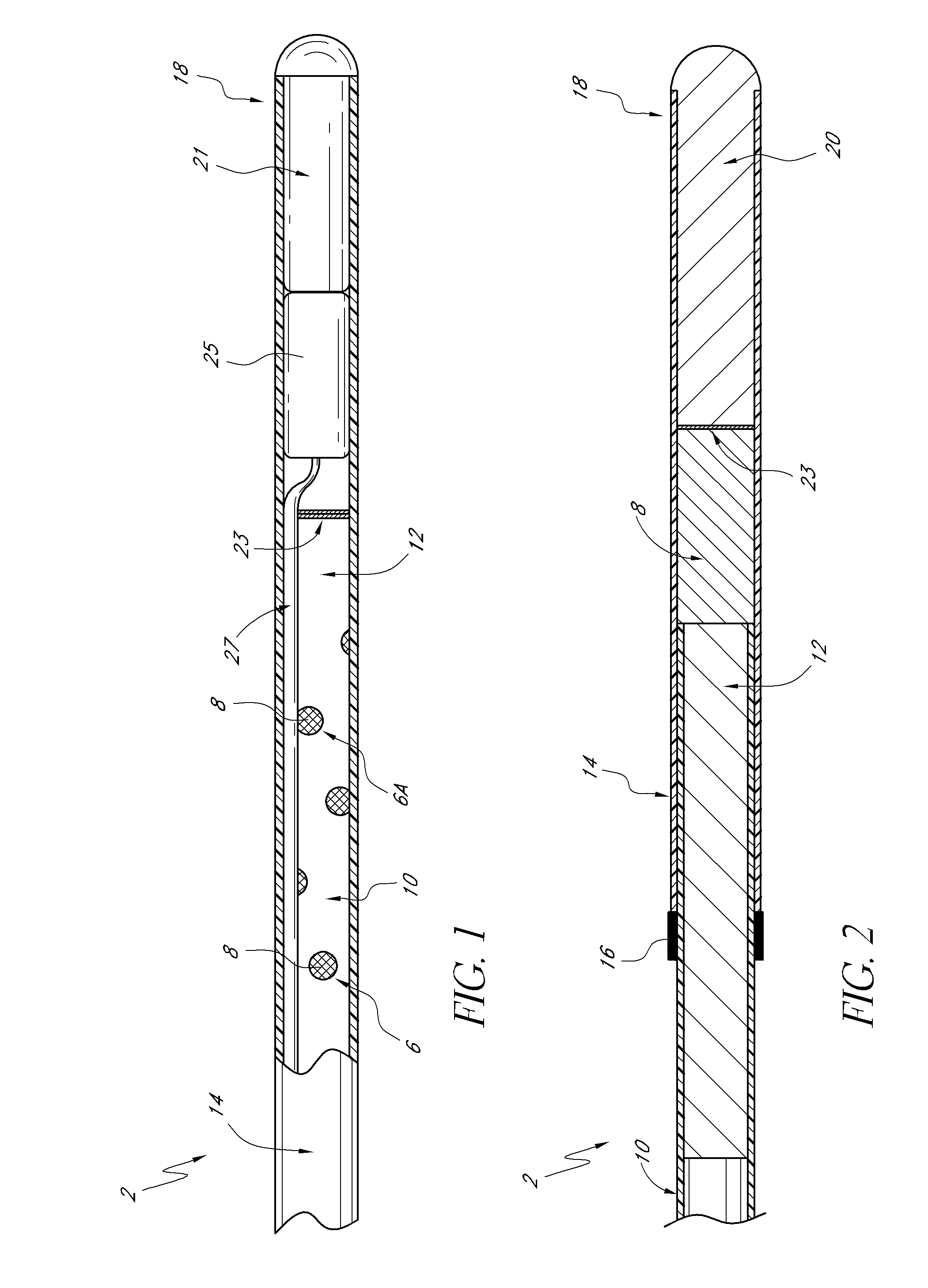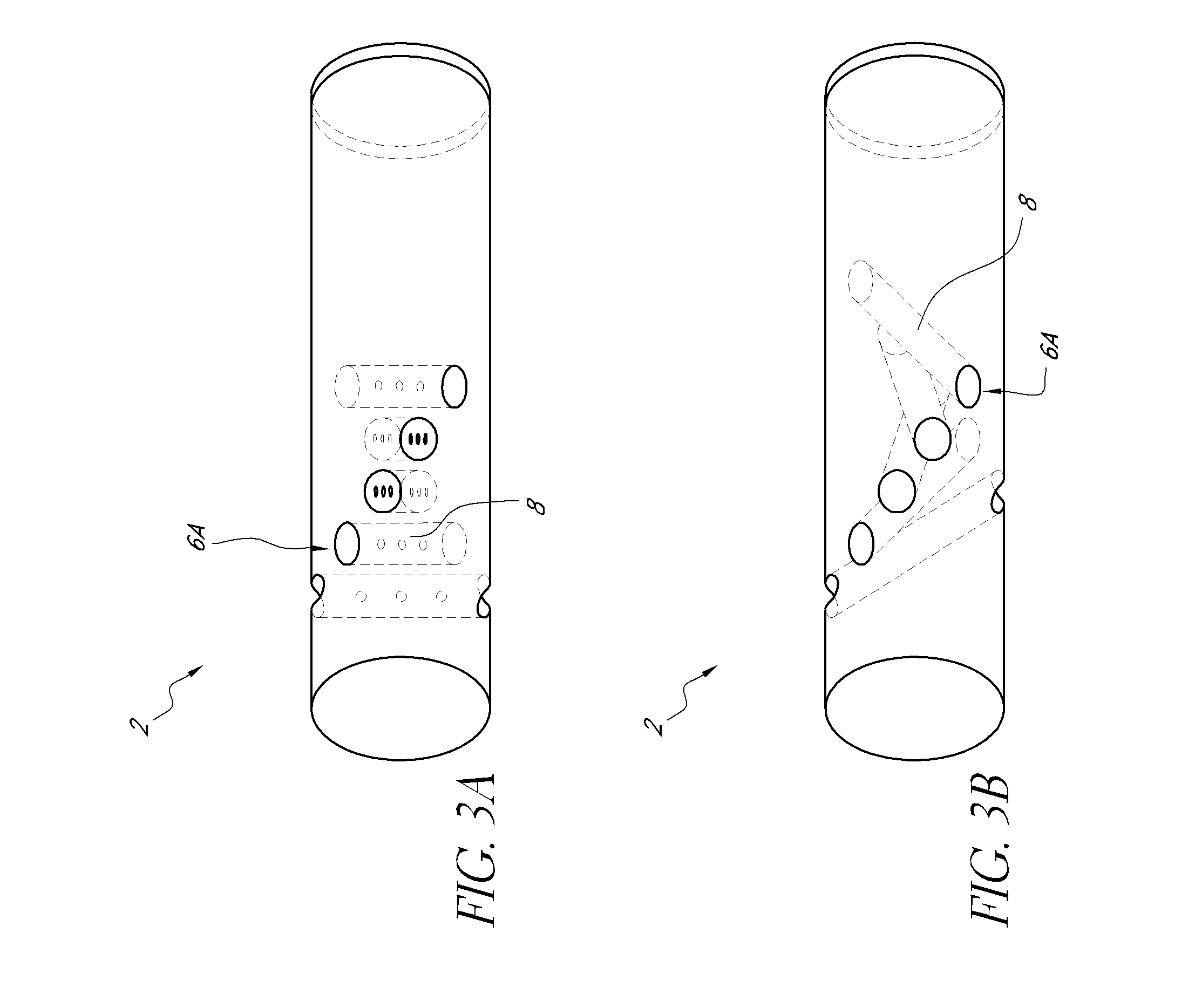Identification of aberrant measurements of in vivo glucose concentration using temperature
- Summary
- Abstract
- Description
- Claims
- Application Information
AI Technical Summary
Benefits of technology
Problems solved by technology
Method used
Image
Examples
example 1
[0130]A sensor comprising a glucose sensor and a temperature sensor made according to the present disclosure is prepared. The sensor is calibrated by using at least one calibration solution with a known glucose concentration. The sensor is deployed intravascularly into the subject and allowed to stabilize. The proximal end of the sensor is coupled to a light source and a programmable monitor adapted to display continuous real-time glucose measurements as well as rates and directions of changes in blood glucose levels. The monitor is programmed to generate an alarm when it detects an aberrant glucose measurement based on a threshold set to 0.4° C. / min.
[0131]The sensor and monitor are put into operation mode where the light source emits light at a fixed frequency of every 15 seconds. The glucose sensor is excited by the light and emits an emission that is indicative of the glucose activity. The glucose sensor measures a glucose activity, which is optionally converted to a glucose conc...
example 2
[0133]A sensor is inserted substantially similarly to Example 1, except the alarm is set to trigger when the average temperature of the first and third times is different by more than 0.4° C. than the average temperature of the second and fourth times. At a first time, the glucose level is about 100 mg / dL and the temperature sensor is measuring 37.0° C. At the same first time, IV fluid is infused into the subject upstream of the same vascular line used for the glucose measurements. At a second time about 15 seconds after the infusion, the sensor measures the glucose concentration to be about 95 mg / dL at 36.9° C. At a third time about 30 seconds from the infusion, the sensor measures the glucose concentration to be about 95 mg / dL at 36.8° C. At a fourth time about 45 seconds from the infusion, the sensor measures the glucose concentration to be about 90 mg / dL and the temperature sensor is measuring 36.9° C. At a fifth time about 60 seconds from the infusion, the sensor measures the g...
PUM
 Login to View More
Login to View More Abstract
Description
Claims
Application Information
 Login to View More
Login to View More - R&D
- Intellectual Property
- Life Sciences
- Materials
- Tech Scout
- Unparalleled Data Quality
- Higher Quality Content
- 60% Fewer Hallucinations
Browse by: Latest US Patents, China's latest patents, Technical Efficacy Thesaurus, Application Domain, Technology Topic, Popular Technical Reports.
© 2025 PatSnap. All rights reserved.Legal|Privacy policy|Modern Slavery Act Transparency Statement|Sitemap|About US| Contact US: help@patsnap.com



